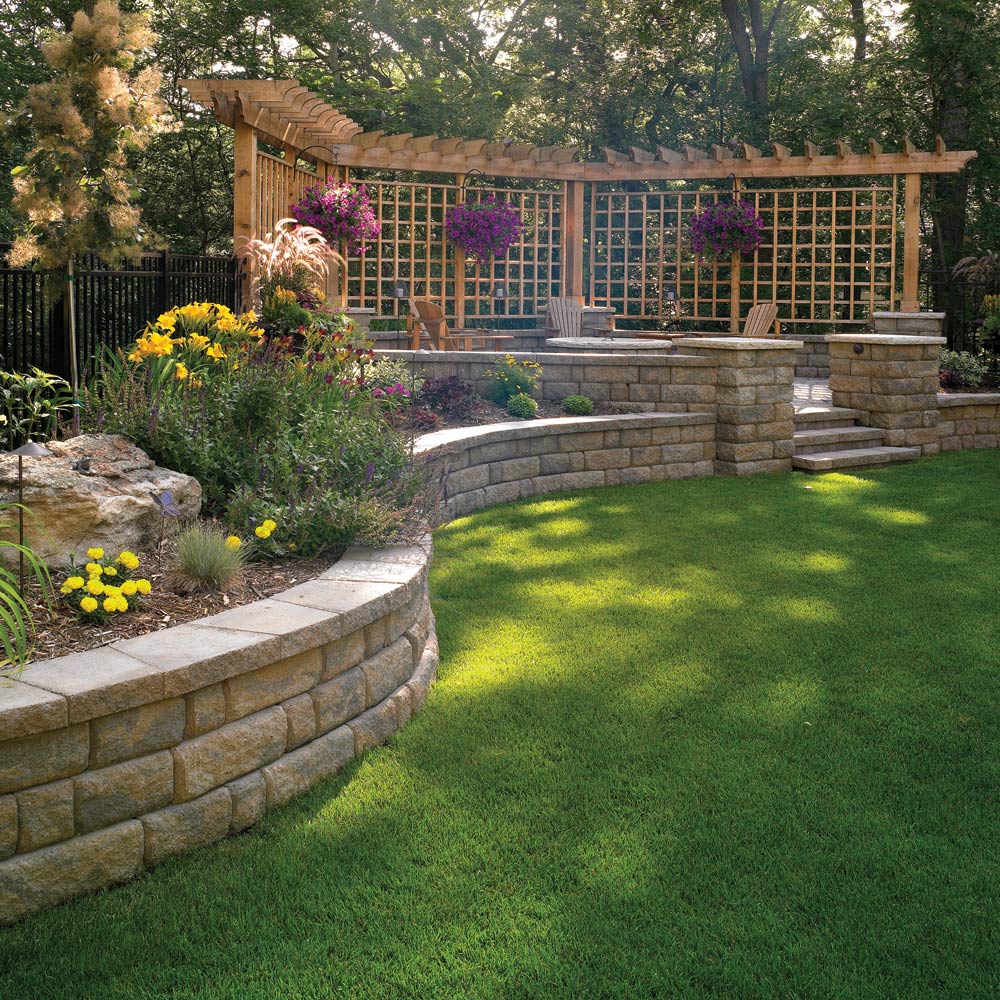Retaining Wall And Garden Wall Construction Can Be Fun For Everyone
Wiki Article
The 45-Second Trick For Retaining Wall And Garden Wall Construction
Table of ContentsExcitement About Retaining Wall And Garden Wall ConstructionFascination About Retaining Wall And Garden Wall ConstructionSome Ideas on Retaining Wall And Garden Wall Construction You Should KnowNot known Factual Statements About Retaining Wall And Garden Wall Construction
If this slope is not controlled, the wall surface will certainly move or fail. Rain that runs off the top of a retaining wall surface can harm the dirt as well as plants on either side, eroding them away. Water drainage systems divert this water from susceptible areas, reducing the influence to the structure and also its surroundings.It's been stated half of all the problems with preserving wall surfaces include drain as well as water concerns, as well as maintaining water out of these walls is a large one. If it's dry, there's little to no chance any type of greenery can hold - Retaining Wall And Garden Wall Construction. An appropriately developed and also installed system will certainly maintain your wall completely dry, saving you cash on upkeep as well as substitute costs.
Load it with smashed stone or gravel. All preserving wall surfaces need to consist of water drainage rock also if a draining pipeline is not required. Place filter textile over the drainage stone and also below the topsoil. That protects against fine material as well as organic issue from obstructing up the drain rock. If your retaining wall surface needs a drain pipe, ensure the pipe has slots on all sides, not just one.

The smart Trick of Retaining Wall And Garden Wall Construction That Nobody is Discussing
This damages can be expensive to repair, and also a correctly installed drainpipe would have prevented it (Retaining Wall And Garden Wall Construction).
A retaining wall surface that maintains soil on the backside and also water on the frontside is called you could try here a seawall or a bulkhead. A keeping wall surface is created to hold in location a mass of planet or the like, such as the side of a terrace or excavation. The framework is built to resist the side pressure of soil when there is a desired adjustment in ground elevation that goes beyond the angle of repose of the soil.

These are cantilevered from a footing and rise over the quality on one side to keep a higher level grade on the contrary side. The wall surfaces have to stand up to the lateral advice pressures generated by loose soils or, in many cases, water pressures. Every maintaining wall supports a "wedge" of soil. The wedge is specified as the dirt which extends past the failing aircraft of the soil type present at the wall surface site, and can be calculated when the soil friction angle is known.
The Ultimate Guide To Retaining Wall And Garden Wall Construction
This decrease decreases the pressure on the keeping wall surface. (phi) and the natural toughness (c) of the kept material, as well as the instructions and also magnitude of motion the preserving structure undergoes.
Different types of maintaining wall surfaces Construction kinds of gravity retaining wall surfaces Gravity wall surfaces depend upon their mass (rock, concrete or other heavy material) to withstand stress from behind as well as may have a 'batter' setback to improve stability by leaning back toward the retained dirt. For brief landscape design wall surfaces, they are frequently made from mortarless stone or segmental concrete units (stonework systems).
These walls cantilever loads (like a light beam) to a large, architectural footing, converting horizontal stress from behind the wall surface to vertical pressures on the ground listed below. Often cantilevered walls are buttressed on the front, or consist of a counterfort on the back, to boost their strength withstanding high loads. Buttresses are brief wing wall surfaces at ideal angles to the major trend of the wall. Diaphragm walls are pricey walls, yet they save time and also our website space, and also thus are utilized in urban constructions. Sheet stack retaining walls are generally used in soft dirt as well as tight areas.
For a fast quote the material is usually driven 1/3 over ground, 2/3 underground, yet this may be modified depending on the setting. Taller sheet heap walls will require a tie-back support, or "dead-man" placed in the dirt a distance behind the face of the wall surface, that is tied to the wall, normally by a cable or a pole.
The 25-Second Trick For Retaining Wall And Garden Wall Construction
A secured preserving wall surface can be created in any one of the aforementioned styles but also consists of additional toughness making use of cables or various other keeps anchored in the rock or soil behind it. Usually driven right into the product with boring, supports are after that broadened at the end of the cord, either by mechanical ways or commonly by infusing pressurized concrete, which broadens to develop a bulb in the soil.Report this wiki page